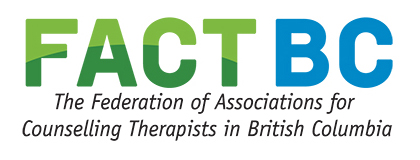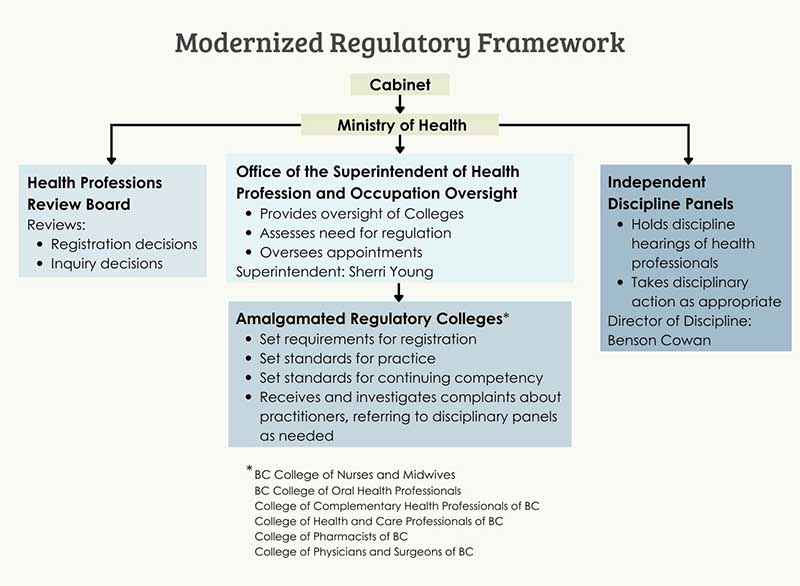The process of amalgamating existing health care colleges called for by the Health Professions and Occupations Act (HPOA) has now been completed. Previous amalgamations by physicians and the nursing profession were followed by the dental health professionals. Finally, there is now a new College of Complementary Health Professionals (massage therapy, traditional Chinese medicine & acupuncture, etc.); and the new College of Health and Care Professionals of BC (CHCPBC).
The professions currently under the umbrella of the CHCP are: Audiologists, Optometrists, Opticians, Hearing Instrument Practitioners, Speech-language Pathologists, Psychologists, Physical Therapists, Occupational Therapists and Dietitians. We do not know, but we anticipate the CHCP will be responsible for Psychotherapists if, and when we become regulated.
The amalgamated College has a Board of Directors, five Regulatory Committees and three Board Support Committees, plus the necessary support staff including a Registrar and a Chief Executive Officer.
Under the Health Professions and Occupations Act, the Board and the members of its committees are appointed by the Minister of Health, with equal numbers of public and professional members, all selected on the basis of demonstrated competency to operate a regulatory body in pursuit of the goal of improved public safety.
The first Board has been selected and includes the following professional representation: Dietitian, Occupational Therapist, Optician, Speech-Language Pathologist, Optometrist and Physical Therapist. Public members include: a CPA, a Finance and Administration member of a First Nation, an MBA specialist in project management, a lawyer experienced in government relations, a management consultant with Health Professions Board experience, and an experienced business executive.
The CHCPBC’s Regulatory Committees
The College’s Regulatory Committees consist of the Registration Committee, the Quality Assurance Committee, the Inquiry Committee, the Discipline Committee, and the Professional Practice and Standards Advisory Committee. These replace the equivalent committees which existed in the previous separate Colleges. When dealing with issues arising from particular professions, the daily work will usually occur in profession-specific panels, always including a member of the specified profession in addition to others.
The Board has three additional Committees which support its overall administrative functions: the Governance Committee, the Finance & Audit Committee and the Human Resources Committee. By consolidating these functions at the Board Committee level, a division of labour is achieved so that the units responsible for each profession can focus on regulatory issues such as their professional standards, qualifications for registration and the like while leaving the business of administration of the larger organization to committees of the Board.
Regulating Each Profession within an Amalgamated College
One of the major concerns that was expressed during discussion of amalgamation was the fear that a profession regulated by an amalgamated College would “lose control” of their profession, particularly such issues as registration requirements, practice standards, ethical codes and discipline matters. For example, if there is only one College Registration Committee, how can it reflect the unique facets of each of the several regulated professions?
The CHCPBC currently states that each profession retains specific standards of practice and the members of each profession regulated by the College are guided by their own Code of Ethics or Code of Conduct.
In addition, most of the granular work of the standing committees of the College will be carried out by panels selected from among a larger Committee membership pool. In the instance of a Registration matter for a Psychologist, the panel will always have a committee member from that profession, one or more public members with complementary skills and perhaps a member from another profession impacted by the issue at hand.

